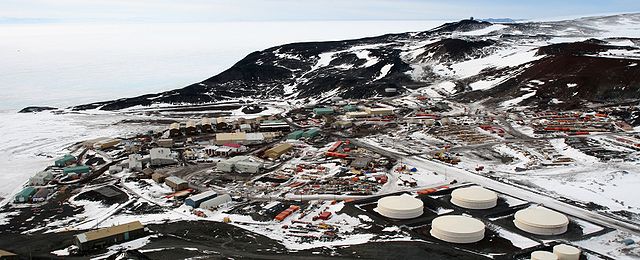The McMurdo Sound is a sound in Antarctica, known as the southernmost passable body of water in the world, located approximately 1,300 kilometres (810 mi) from the South Pole.
Weather instruments such as this device installed upon Iceberg B-15A provide scientists a better understanding of Antarctica's impact upon global climate.
A research diver reaches towards a jellyfish that thrives in the −1.5 °C (29.3 °F) salt water of McMurdo Sound.
Underwater photo showing the diverse animal life in McMurdo Sound, including the scallop Adamussium colbecki, sea urchin Sterechinus neumayeri, sea sponge Homaxinella balfourensis, brittlestar Ophionotus victoriae and sea spider Colossendeis
An iceberg that calved off Iceberg B-15 caused extensive pack ice buildup in McMurdo Sound, blocking shipping and preventing penguin access to open water.
McMurdo Station is an American Antarctic research station on the southern tip of Ross Island, which is in the New Zealand–claimed Ross Dependency on the shore of McMurdo Sound in Antarctica. It is operated by the United States through the United States Antarctic Program (USAP), a branch of the National Science Foundation. The station is the largest community in Antarctica, capable of supporting up to 1,500 residents, and serves as one of three year-round United States Antarctic science facilities. All personnel and cargo going to or coming from Amundsen–Scott South Pole Station first pass through McMurdo. McMurdo Station continues to operate as the hub for American activities on the Antarctic continent. By road, McMurdo is 3 kilometres (1.9 mi) from New Zealand's smaller Scott Base.
McMurdo Station from Observation Hill
Nuclear reactor commemorative plaque
The supply ship MV American Tern during cargo operations at McMurdo Station during Operation Deep Freeze 2007. The square building in the foreground is Discovery Hut.
McMurdo Station from above.








